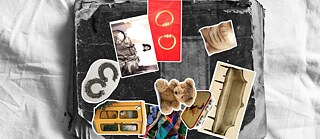The Gallery of Lost Objects

Welcome to the Gallery of Lost Objects: a collection of items and emotions that have been curated by our narrative experts, to share their personal and cultural histories in a way that makes space for each others’ vulnerabilities.
Stories are repositories of history, information, imagination and so much more. It doesn’t quite matter what amount of “fact” they contain, what makes them so very real is the unwritten, unspoken compact that storytellers establish with their readers or listeners. The storyteller knows that in order for the story to resonate with their audience, they must tap into universal emotions that will transcend boundaries and even languages. Regardless of the outcome of the story, its emotions and themes must be recognisable to all who listen or read the story, even if they don’t always agree with the storyteller’s perspective. Whether the tale is about love, hate, loss, redemption, triumph or failure, the heart of the story must beat so loud as to echo through its receivers.
What is the foundation of such an agreement between people? Vulnerability. What does it mean to be vulnerable? To exist in conditions that might expose us to hurt or harm or risk in ways that one might not be able to overcome easily. By sharing stories, we are able to share our vulnerabilities. They may lie anywhere, inside our bodies and outside it – in our geographical identities, our socio-economic identities, ethnic identities, sexual and religious identities, our medical conditions and histories, our behavioural challenges, our educational opportunities – the landscape of vulnerability is vast and seemingly endless.
The past is a strange country; our first memories of experiencing the world around us live there. Our narrative experts know that some of the first stories they have told have emerged from their own histories, where all kinds of vulnerabilities have been tucked away from sight. In an exercise to tap into that vulnerability, the experts located a “lost object”: something that once existed as a core memory of sorts, sometimes tied up with a socio-cultural practice, or an emotion that could not always be easily identified. And even though the object may no longer be “useful” or legitimate in the present day, it remains powerful for it is able to conjure a memory of a time gone by.
Another crucial aspect of locating the lost object is to share its history. In our previous sessions, we had learned to speak in each other’s voices. What if the story about the object was told by the object itself? By doing so, one is able to establish distance from the emotion that is associated with the memory, and perceive it more clearly to be able to share its story. Does this method diminish vulnerability? No. Each member of the exercise is learning to manage vulnerabilities on their own but also as a collective. When we realise how diffcult and courageous it is to share our vulnerabilities, we learn to be more accepting and gentle while receiving other people’s stories.
So, welcome to the Gallery of Lost Objects: a collection of items and emotions that have been curated by our narrative experts, to share their personal and cultural histories in a way that makes space for each others’ vulnerabilities.